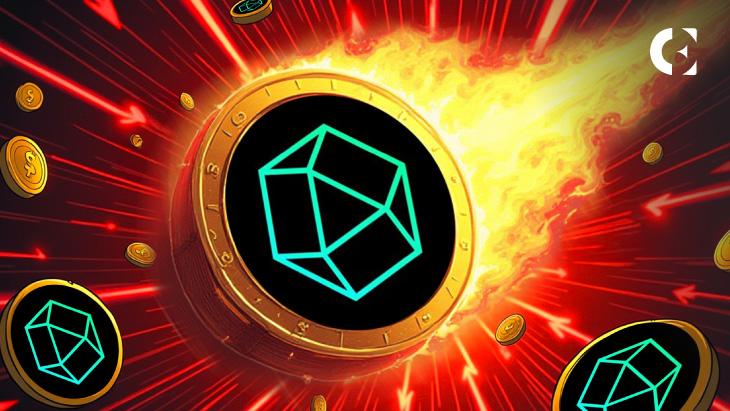The price of Polyhedra Network’s native token ZKJ nosedived by 83%, igniting fears of a repeat of infamous collapses like Terra’s LUNA. The crash came on the back of “abnormal on-chain activity,” centered around the ZKJ/KOGE trading pair, causing Binance to flag a liquidity crunch and spurring intense debate across the crypto community.
The price of Polyhedra Network’s native token ZKJ nosedived by 83%, igniting fears of a repeat of infamous collapses like Terra’s LUNA. The crash came on the back of “abnormal on-chain activity,” centered around the ZKJ/KOGE trading pair, causing Binance to flag a liquidity crunch and spurring intense debate across the crypto community.
At the time of writing, ZKJ trades at $0.3328, with a 45% drop in trading volume, down to $1.8 billion, . Despite reassurances from the Polyhedra team, many investors are drawing parallels to past token implosions, raising serious red flags on the project’s health.
The cascade began on June 15, when three whale wallets withdrew around $7 million in KOGE and ZKJ tokens from Binance Alpha pools. The initial withdrawal drained the KOGE/USDT pool, prompting traders to panic-swap into ZKJ. That overwhelmed the thin liquidity of the ZKJ market, causing a staggering 60% drop in just 90 minutes.
With a turnover ratio of 18.40 (trading volume relative to market cap), ZKJ’s market showed all the signs of a thin, volatile market primed for a meltdown. This was compounded by a lack of liquidity depth, exacerbating the price swings. Polyhedra responded with a :
A closer look at ZKJ’s tokenomics reveals significant underlying risks. ZKJ faces a on June 19, when 15.5 million tokens, valued more than $4.5 million at current crash prices, are set to hit the market. This looming unlock has stoked front-running fears, where insiders and early investors sell ahead of the flood of supply, pushing prices down further.
Adding to the concern is a stunning concentration risk: the top 10 ZKJ holders control 68.6% of the total token supply. Such control can enable coordinated exits, precisely the kind of behavior suspected in the current crash.
To make matters worse, Binance’s June 17 rule change, which sunsets its “Alpha Points” program, removed incentives for trading the KOGE/ZKJ pair, further draining liquidity.
This isn’t the first time the crypto community has witnessed a meltdown of this scale. Mantra (OM), a leading Real-World Asset (RWA) token that has from its all-time high of $9.04, is now trading at around $0.20.
OM’s freefall wiped nearly $6 billion off its market cap, amid allegations that the team controlled up to 90% of the token supply and may have coordinated a sell-off.
While Mantra’s management has denied these claims, they’ve been forced to announce token burns and buyback plans to restore investor confidence, a tactic used to shrink supply and support prices.
Yet, analysts have warned of dead cat bounces (DCBs), short-lived recoveries that mislead retail investors into buying before the asset resumes its downward spiral.
